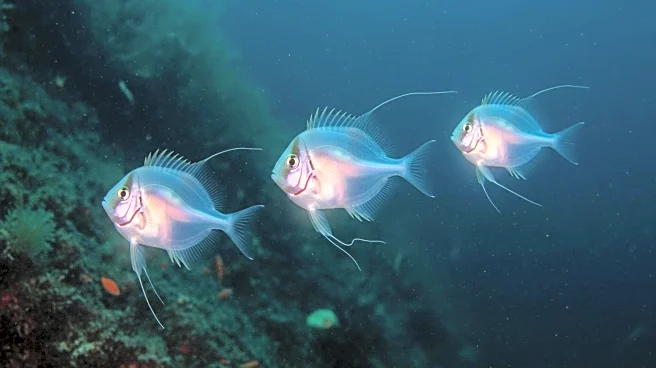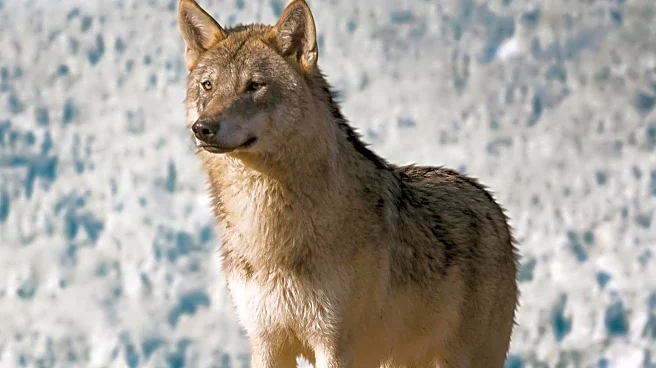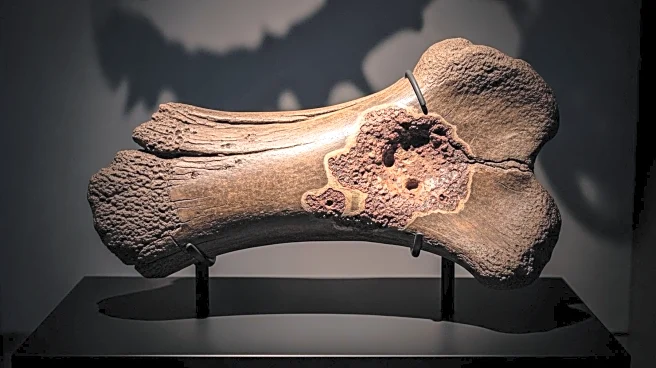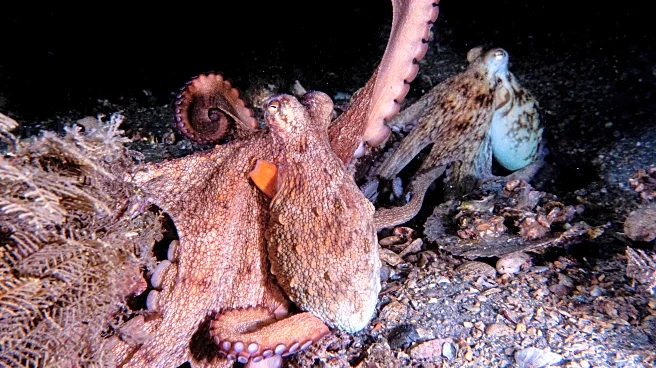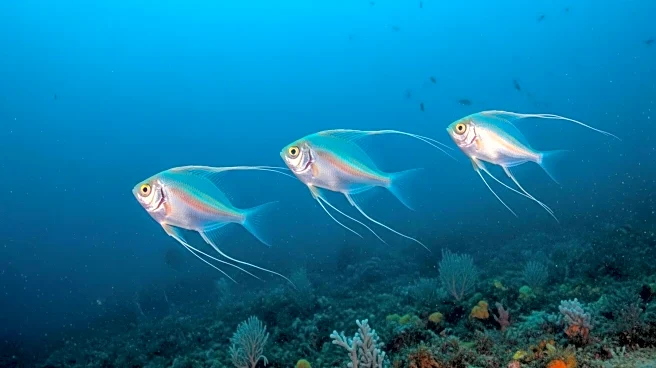What is the story about?
What's Happening?
A remarkably preserved Ice Age wolf was discovered in Siberia, offering researchers a unique opportunity to study ancient predators. The wolf, found in 2021, was almost entirely intact, with skin, fur, and internal organs preserved due to the cold conditions. Researchers in Yakutsk conducted a necropsy on the specimen, which dates back approximately 44,000 years to the late Pleistocene. This discovery is significant as it is the first intact carnivorous predator from this era, providing valuable data on the diet, microbiota, and genetic lineage of Ice Age wolves. The preservation of the wolf's tissues allows scientists to reconstruct its diet and analyze ancient pathogens, contributing to our understanding of Ice Age ecosystems.
Why It's Important?
The discovery of the Ice Age wolf is crucial for understanding the ecological dynamics of ancient times. Carnivores are rarely preserved in such a complete state, making this find particularly valuable for reconstructing food webs and predator-prey relationships from the Pleistocene era. The genetic analysis of the wolf can provide insights into the evolutionary history of wolves and their relation to modern species. Additionally, studying ancient pathogens found in the wolf's gut may offer clues about disease transmission and survival strategies during the Ice Age. This research could also inform current biosecurity measures as climate change may release ancient microbes from thawing permafrost.
What's Next?
Researchers plan to sequence the genomes of the wolf and its gut contents, comparing them with regional prey archives to understand its hunting habits and ecological role. The microbial analysis will be cross-checked against modern samples to distinguish ancient signals from contemporary noise. This work will contribute to ongoing discussions about biosecurity in thawing Arctic regions, as ancient pathogens may pose risks to current ecosystems. The findings will also enhance our understanding of Ice Age biodiversity and the evolutionary pathways of carnivorous species.
Beyond the Headlines
The preservation of the Ice Age wolf highlights the role of permafrost in conserving ancient biological material, offering a window into past climates and ecosystems. This discovery underscores the importance of interdisciplinary research combining paleogenetics, microbiology, and ecology to unravel the complexities of ancient life. The ethical considerations of reviving ancient pathogens and the implications for modern wildlife conservation are also significant, as they challenge our understanding of ecological resilience and adaptation.
AI Generated Content
Do you find this article useful?


